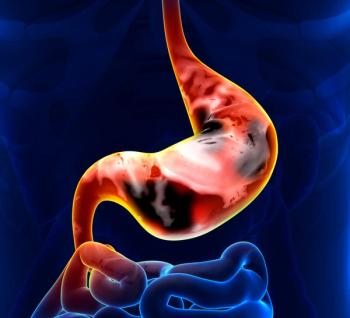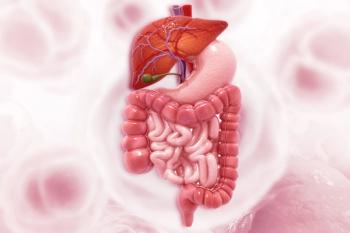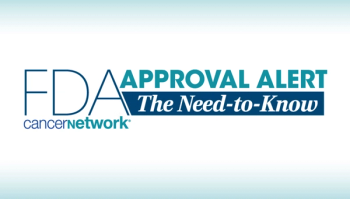
Oncology NEWS International
- Oncology NEWS International Vol 16 No 6
- Volume 16
- Issue 6
ODAC: orBec Yields No 'Substantial Efficacy' in GI GVHD
The FDA's Oncologic Drugs Advisory Committee (ODAC) voted 7-to-2 that the data presented by DOR BioPharma in support of its new drug application for orBec (beclomethasone dipropionate) failed to demonstrate substantial efficacy for orBec for its intended purpose
SILVER SPRING, MarylandThe FDA's Oncologic Drugs Advisory Committee (ODAC) voted 7-to-2 that the data presented by DOR BioPharma in support of its new drug application for orBec (beclomethasone dipropionate) failed to demonstrate substantial efficacy for orBec for its intended purpose, a conclusion also reached by the FDA's review team. The company is seeking approval for orBec for the treatment of graft-vs-host disease (GVHD) involving the gastrointestinal tract in conjunction with an induction course of high-dose prednisone or prednisolone. The oral drug is a diester of beclomethasone, a synthetic corticosteroid with anti-inflammatory and immunosuppressive effects. It was granted orphan drug designation and fast track status during its development.
The company submitted findings from two trials of orBec as a treatment for GVHD following allogeneic hematopoietic cell transplantation to support the drug's efficacy. The pivotal study, a phase III, multicenter, randomized, double-blind, placebo-controlled trial, involved 129 patients with grade 2 GVHD who received a 10-day induction course of high-dose prednisone and either orBec or placebo for 50 days. The supportive study was a single-institution, randomized, double-blind, placebo-controlled phase II trial in 60 patients with GI GVHD.
The pivotal study's primary endpoint (time to GVHD treatment failure through study day 50) failed to reach significance (P = .118) despite a 37% lower risk of treatment failure for the orBec group. Through day 80 (a secondary endpoint), the difference was significant (P = .023) with a 46% lower risk of treatment failure for the orBec patients.
A secondary efficacy endpoint (proportion of patients with GVHD treatment failure by study day 50) showed a significant difference in favor of orBec (31% vs 48% for placebo, P = .05). By day 80, the difference was 39% vs 65% (P = .003).
At day 200 post-transplant (a safety endpoint), orBec patients had a higher survival rate (92% vs 76% for placebo patients) (HR 0.29, P = .014). The estimated 1-year post-randomization mortality was significant in favor of orBec (29% vs 42% for placebo) (HR 0.54, P = .04). This was not a pre-specified endpoint. "Patients with GVHD randomized to orBec had meaningful reductions in mortality," said George B. McDonald, MD, head of gastroenterology/hematology, Fred Hutchinson Cancer Research Center.
In its analysis, FDA emphasized that the pivotal study had failed its primary efficacy endpoint and that the trial had a major imbalance in the number of nonmyeloablative transplants between the treatment and placebo arms. "Once the study failed on the primary endpoint, any further analyses are exploratory, and statistical significance cannot be determined," said FDA medical reviewer Nancy S. Scher, MD.
Articles in this issue
over 18 years ago
ACS Launches Major Epidemiology Studyover 18 years ago
Pt Selection Key to Radioembolization of Liver Ca'sover 18 years ago
Million Dollar Gotham Prize Announcedover 18 years ago
Diagnostic Dilemma: GI Diseaseover 18 years ago
Junovan Fails to Win ODAC Nod for Osteosarcoma Treatmentover 18 years ago
Surveillance Colonoscopy Guidelines Not Being Followedover 18 years ago
Removing Stage IV Primary May Cut Mortalityover 18 years ago
Nuclear Export Inhibitors Testing Moving Forwardover 18 years ago
Gene Expression Profiles of HCC Revealed on CT ScansNewsletter
Stay up to date on recent advances in the multidisciplinary approach to cancer.

















































































